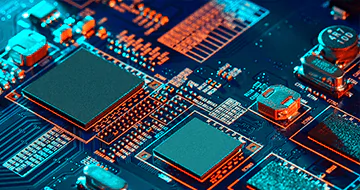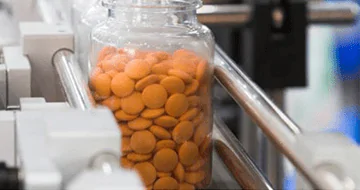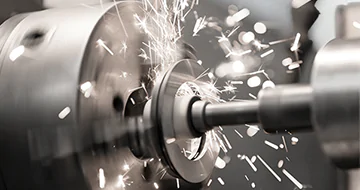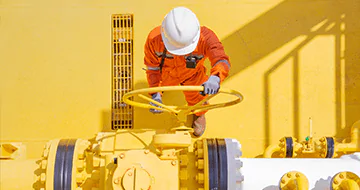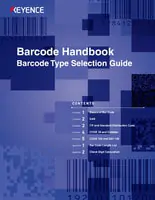KOD 128 ve GS1-128
Dünyada 100’e yakın barkod mevcuttur. Aşağıda ITF barkodlarının temellerini öğrenmek adına kısa bir giriş yer almaktadır.
KOD 128
KOD 128, 1981 yılında Computer Identics Corporation (ABD) tarafından geliştirilen bir çeşit barkoddur.
KOD 128, 128 ASCII kod karakterinin tümünü temsil edebilir (sayılar, büyük harf/küçük harf, semboller ve kontrol kodları). Bilgisayar klavyesi ile kullanılabilen tüm karakterleri (Japonca kanji, hiragana ve katakana hariç) temsil edebildiği için bilgisayar dostu bir barkoddur
KOD 128 Kombinasyonu
Aşağıda temel kombinasyonlar gösterilmiştir:
• Tek bir harf (karakter) 9 çubuk (bars) ve boşlukla gösterilir.
• Yıldız işaret (*) barkodun başına ve sonuna eklenir. (Başla/Dur karakteri)
• Karakterler arasındaki boşluklara “karakterler arası boşluk” denir. Genellikle, geniş boşluk dar çubuk (bar) genişliği kadar geniştir. (Maksimum genişlik, dar çubuk genişliğinden 3 ila 5,3 kat daha geniş belirlenmişti.)
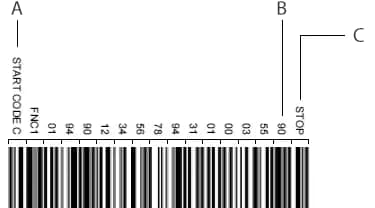
• Tek bir karakter 3 çubuk (bar) ve 3 boşlukla temsil edilir (toplam 6 öğe).
• Başlama karakterinin 3 türü vardır; “CODE-A”, “CODE-B” ve“CODE-C”. Başlangıç karakterinin türü, daha sonraki karakterlerin karakter bileşimini belirler. (Karakter kompozisyonu tablosu için buraya bakın. Örneğin, KOD A başlangıç karakteri olarak kullanıldığında, KOD-A sütunundaki karakterler gösterilebilir.)
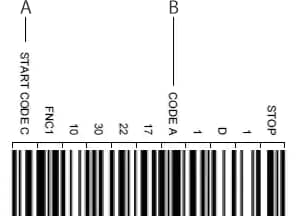
• Kod seti karakterleri (KOD-A, KOD-B ve KOD-C) kullanıldığında, KOD-A’nın başlangıç karakteri ile başlayan barkod, KOD-B veya KOD-C sütunundaki karakterleri kullanmak için barkod işlemenin ortasında değiştirilebilir.
• “SHIFT” kullanıldığında, SHIFT’in yalnızca yanındaki bir karakter sonraki sütundaki karakterle değiştirilebilir (A’dan B’ye, B’den C’ye, C’den A’ya). (Bilgisayar klavyesindeki SHIFT tuşu çalışmasına benzer)
KOD 128 Karakter Kombinasyonu

KOD 128 Özellikleri
• KOD 128 barkodu tüm 128 ASCII kod karakterlerini içerebilir ([ESC], [STX], [ETX], [CR] ve [LF] gibi kontrol kodları dahil).
• Başlangıç karakteri olarak KOD-C kullanıldığında, bir çubuk deseni 2 basamaklı sayıları temsil edebilir. Bu özellik, oldukça verimli barkod bileşimi sağlar. Barkod verisi 12 veya daha fazla basamağa sahipse, KOD 128, ITF’den daha küçük boyuta olanak sağlar.
• KOD 128’de 4 tip çubuk boyutu kullanıldığından baskı kalitesi yüksek yazıcılara gereklidir. KOD 128, nokta vuruşlu yazıcılar ve FA mürekkep püskürtmeli yazıcılarla oluklu mukavvalar üzerine flekso baskı için uygun değildir.
KOD 128 Uygulamaları
CODE-C’nin başlangıç kodu olarak kullanılması, CODE 128’in, yalnızca sayılar işleniyorsa, barkoda çok yüksek veri yoğunluğu sağlamasına izin verir.
GS1-128, CODE 128’in özelliklerini kullanır ve güncel olarak birçok endüstriyel uygulamada kullanılmaktadır. GS1-128 ile ürünün üretim tarihi, açılış tarihi, ağırlığı, boyutu, parti numarası, varış yeri, müşteri hesabı gibi çeşitli veriler barkoda dahil edilir
KOD 128 aşağıdaki endüstrilerde kullanılır:
• ABD hazır giyim endüstrisi
• ABD gıda işleme endüstrisi
• ABD uyuşturucu ve tıbbi ekipman endüstrisi
• Avustralya ve Yeni Zelanda’daki gıda endüstrileri
• Avrupa uyuşturucu ve tıbbi alet endüstrisi
GS1-128
GS1-128 Nedir?
Çeşitli uygulamalar için barkod etiketi oluşturmada gerekli veriler kullanılır.
Örneğin, EDI (şirketler arasında elektronik veri alışverişi sistemi) kullanarak çevrimiçi satın alma/sipariş verme, gıdaların açık tarih yönetimi, ilaçların geçerlilik yönetimi, gelen ürünleri kontrol etme işini basitleştirme, her varış noktası için paketleri sıralama vb. (Aşağıdaki etiket, bir gıda üreticisinden alınan bir örnektir.)
• Ambalaj numarası
• Paketteki miktar
• Ağırlık, kapasite ve kübik kapasite
• Üretim tarihi ve kalitenin geçerliliği
• Parti numarası
• Konum numarası (varış yeri)
• Müşterinin hesap kodu
• Müşterinin sipariş numarası
GS1-128, JAN kodu ve güncel olarak mevcut olan standart dağıtım kodu (ITF) tarafından sağlanan verilere ek olarak dağıtım ve ticari işlem verileri dahil olmak üzere çeşitli verileri sağlayan barkoddur.
Aşağıdaki veriler GS1-128 barkoduna dahil edilebilir:
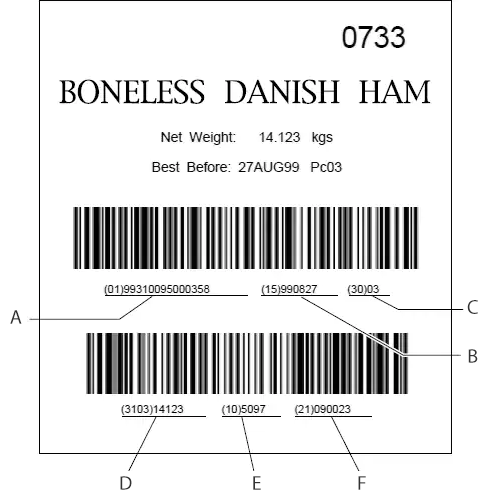
GS1-128’in Kurulum Arka planı
Standart dağıtım kodu (ITF) ve JAN kodu, üretim tarihi, paket numarası, kalite geçerliliği ve sipariş numarası gibi verileri değil ürünün kendisini ve miktarını belirtmek için kullanılan barkodlardır.
KOD 39, barkodun içine bu tarz verilerin eklenmesine izin verirken verilerin tanımı ve basamak sayısı farklı olduğundan şirketler arasında bu tür verilerin alışverişine izin vermez.
GS1-128, verilerin öğeleri, basamak sayısı ve barkod türünün standartlaştırılmasıyla ortak kullanım için evrensel bir barkod olarak belirlenmiştir
GS1-128 Bileşimi
GS1-128’in temel bileşimi aşağıdaki gibidir:
• KOD 128 barkod olarak kullanılır.
• Ağırlık ve açık veri gibi gerekli olan verileri ayırmak amacıyla, verilerin ardından uygulama tanımlayıcısı (application idetifier-AI) eklenir. Eğer birden fazla veri gösterilirse, her bir veri birbirine bağlanacaktır.

A: Uygulama tanımlayıcısının (A.I) teslimat kutusu kodunu belirten basamak
B: Uygulama tanımlayıcısının (A.I) kalite geçerliliğini gösteren basamak
C: Uygulama tanımlayıcısının (A.I) teslimat miktarını belirten basamak
Uygulama tanımlayıcıları parantez içerisine alınmış olsa da parantezler barkod datasına dahil değildir. Yalnızca gösterim için kullanılırlar.
Aşağıdaki örnekte, “01” uygulama tanımlayıcısının ardından teslimat kutusunu tanımlamak için 14 basamaklı kod atanmıştır (oluklu mukavva kutular için minimum ambalaj birimi). “15” uygulama tanımlayıcısının ardından, kalitenin geçerliliğini (tüketim geçerliliği veya ilaç geçerliliği) temsil eden veriler 27 Ağustos 1995’i göstermek için örnek verilmiştir. Son uygulama tanımlayıcısı “30”dan sonra ise teslimat miktarını temsil eden veriler 3 adet gösterecek şekilde verilmiştir.
Yukarıdakiler dışında 100’e yakın uygulama tanımlayıcısı vardır. Gerekli olan veriler kullanıcılar tarafından seçilir ve barkoda eklenir.
GS1-128’den sabit verileri temsil etmesi beklenmemiştir. Ancak, veriler kullanıcı tarafından seçilebilir. Bu nedenle, şirketler arasında GS1-128’in devamlı kullanımı için, mevcut verilerle birlikte barkod sistemi standartları ilgili sektör ve ilgili şirket grupları tarafından hazırlanacaktır.
• GS1-128’i KOD 128’den ayırt edebilmek için, başlatma kodunun (KOD-A’dan C’ye) ardından [FNC 1] (fonksiyon 1) verilmesi gerekir.
• Uygulama tanımlayıcısını takip eden veriler için basamak sayısı değişken uzunlukta olsa bile, verileri ayırmak için [FNC 1] gösterilir.

• EAN koduna ve standart dağıtım koduna (ITF) eklenen GS1-128 ile daha fazla veri eklemek için kod olarak kullanılabilir.
GS1-128, KOD 128 kullanan şirketlerin uygulama tanımlayıcılarını ve ürünle ilgili verilerini veya işlem bilgilerini gösterecek şekilde tasarlanmıştır.
Başka bir deyişle, GS1-128, uygulamaların farklı verileri temsil etmesi için standarttır. KOD 128, yalnızca barkodun kendisi için standarttır. GS1-128 ve CODE 128 arasındaki fark ise, uygulamayı temsil edip etmemesiyle ilgilidir.
GS1-128, KOD 128’in barkod bileşimini kullandığından, GS1-128 verilerini okumak için KOD 128’i okuyabilen herhangi bir barkod okuyucu kullanılabilir.
Uygulama Tanımlayıcısı
Aşağıdaki gibi sınıflandırılabilecek 100 tür uygulama tanımlayıcısı vardır. Uygulama tanımlayıcılarını takip eden verilerden bazıları sabit sayıda basamağa (standart karton kimliği, tarih ve ölçü birimi) sahipken, diğerlerinin basamak sayısı (parti numarası, seri numarası, paketteki miktar, miktar ve sipariş numarası) tanımsızdır.)
| Sınıflandırma | İçerik | Uygulama Tanımlayıcısı |
|---|---|---|
| Paketlenme tarzı | • Karton numaraları, karışık ürünlerin bulunduğu oluklu mukavva kutunun üzerinde belirtilmiştir. • Paletler üzerine yığılmış tüm oluklu mukavva kutularda karton numaraları belirtilmiştir. • SCM etiketinde göstergeli ASN (Advanced Shipment Notice- Gelişmiş Sevkiyat Bildirimi) kullanımı için |
00 “standart karton kimliği” |
| Ürün yönetimi | • Oluklu mukavva kutu teslimat taleplerini karşılar ve standart dağıtım sembolü (ITF) bulunmaz. | 01 “teslimat kutusu kodu” |
| • Yenilenmiş ve değiştirilmiş ürünler | 20 | |
| • Ürünlerin tarihi (üretim tarihi, paketlenme tarihi, garanti süresi) belirtilir. | 11~17 | |
| • Ürün parti (lot) numarası | 10 | |
| • Ürün seri numarası | 21 | |
| Ölçüm göstergesi | • Ağırlık, kübaj ve kapasite ölçülmüş ürünleri (yiyecekler ve tazı balıklar) içeren oluklu mukavva kutular üzerinde belirtilir. | 310~369 |
| Uygulama/Yönetim | • Müşteri sipariş numarası | 400 |
| • Ürün sevkiyat numarası | 401 | |
| • Konum numarası (şirketler, ofisler ve özel yerler) | 410~421 | |
| • Şirket içi kullanım ve şirketler tarafından belirlenmiş herhangi bir veri | 90~99 |
2D Kodların Dezavantajları
| Uygulama Tanımlayıcısı | İçerik | Verilerin basamak sayısı |
|---|---|---|
| 00 | Standart karton kimliği | 18 basamaklı sayılar |
“00”, her bir oluklu mukavva kutu ve teslimat paleti için paket seri numarası veren tanımlayıcıdır. Bu nedenle, her bir teslimat için farklı bir numara verilir.
Veriler, aşağıdaki bileşimde olduğu gibi 18 basamağa sahiptir:
| Paket türü | 1 digit |
|---|---|
| Evrensel şirket kodu | 7 digits |
| Her teslimat için paket seri numarası | 9 digits |
| Kontrol basamağı (modül 10/3 ağırlığı) | 1 digit |
“Paket türleri” aşağıdaki gibidir:
| Paket türü | ||
|---|---|---|
| 0 | Kutu veya karton | |
| 1 | Palet, istif rafı (kutu ve kartondan daha büyük) | |
| 2 | Konteyner (paletten daha büyük) | |
| 3 | Yukarıdakilerin dışında herhangi bir paket türü | |
| 4 | İç gereksinimlere göre (iç kullanım için) | |
| 5 | İlgili firmalar arasında karşılıklı ihtiyaçlar doğrultusunda | |
| 6~9 | Kullanıma izin verilmez | |

“Evrensel şirket kodu”, JAN kaydı yaptıran şirketler için “ülke kodu” + “üretici kodu” ile gösterilir. JAN’a kayıt yaptırmayan şirketler için ise, evrensel işletme hesabı kodu alınması önerilir.
“Standart karton kimliği”, Avrupa ve ABD’de SSCC-18 (Serial Shipping Container Code- Seri Sevkiyat Konteyner Kodu) olarak adlandırılır.
| Uygulama tanımlayıcısı | İçerik | Verilerin basamak sayısı |
|---|---|---|
| 01 | Teslimat konteyner kodu | 14 basamaklı sayılar |
Standart dağıtım kodunun (ITF) aynı bileşimi genellikle “01” için uygulanır. Paketlenmiş ürünün EAN kodu ve ürün miktarını gösteren paket göstergesinden oluşur.
| Paket göstergesi | 1 digit |
|---|---|
| EAN kodu | 12 digits |
| Kontrol basamağı (modül 10/3 ağırlığı) | 1 digit |
“Paket göstergesi” aşağıdaki gibidir:
| Paket göstergesi | ||
|---|---|---|
| 0 | Karışık ürünlerin bulunduğu oluklu mukavva kutular | |
| 1~8 | Aynı miktarda içeren tek parça için oluklu mukavva kutu. 1 ila 8 aralığında ayar. Çoğu durumda 1 ayarlanır. | |
| 9 | Tek bir ürün için farklı miktar içeren oluklu mukavva kutu | |
“Teslimat konteyner kodu” EAN koduyla ve standart dağıtım koduyla aynı veri kompozisyonuna sahip olduğundan yalnızca EAN ve standart dağıtım kodlarının oluklu mukavva kutulara basılmaması koşuluyla kullanılabilir.
“Teslimat konteyner kodu”, Avrupa ve ABD’de SCC-14 (Shipping Container Code- Sevkiyat Konteyner Kodu) olarak adlandırılır.
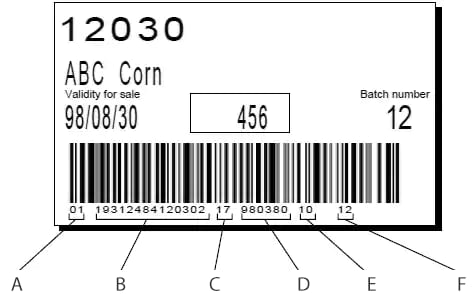
| Uygulama tanımlayıcısı | İçerik | Format/Biçim |
|---|---|---|
| 10 | Parti (grup) numarası (batch/lot) | 20 alfa sayısal karakter içinde |
“10”, ürünün grup (parti, batch) numarasını ve parti (lot) numarasını gösteren uygulama tanımlayıcısıdır. 20 alfa sayısal karakter (değişken uzunluklu) veya daha az kullanılabilir.
| Uygulama tanımlayıcısı | İçerik | Format/Biçim |
|---|---|---|
| 11 | Üretim tarihi (YYMMDD) | 6 basamaklı (digits) sayılar |
| 13 | Paketleme tarihi (YYMMDD) | 6 basamaklı (digits) sayılar |
| 15 | Kalite Geçerliliği (YYMMDD) | 6 basamaklı (digits) sayılar |
| 17 | Satış Geçerliliği (YYMMDD) | 6 basamaklı (digits) sayılar |
Çeşitli tarihlerin verileri gösterilmiştir.
Kalitenin geçerliliği için yönetimde gerekli olan önemli veriler belirtilmiştir. Örneğin, gıdaların “açık tarihi” ve ilaçların “ilaç geçerliliği”.
| Uygulama tanımlayıcısı | İçerik | Format/Biçim |
|---|---|---|
| 400 | Yönetim numarası/İdari numara (müşterinin sipariş numarası) | 30 alfa sayısal karakter içinde |
| 411 | Konum numarası (müşterinin hesap kodu) | 13 basamaklı (digits) sayılar |
Müşterilerin “sipariş numarası” ve “müşteri hesap kodu” gibi idari verileri gösteren uygulama tanımlayıcılarıdır.
| Uygulama tanımlayıcısı | İçerik | Format |
|---|---|---|
| 410 | Konum numarası (varış yeri kodu) | 13 basamaklı (digits) sayılar |
| 420 | Konum numarası (varış noktası posta kodu) | 9 alfa sayısal karakter içinde |
Malları varış noktalarına göre sıralamak için kullanılırlar. “410”, kullanılan EAN şirket kodları ile her bir şirket için sıralama yapılmasını sağlayan uygulama tanımlayıcısıdır.
“420”, kullanılan posta numaraları ile her bir teslimat noktası için sıralamaya izin veren uygulama tanımlayıcısıdır.

Örnek, kapıdan kapıya teslimat hizmeti için uygulama tanımlayıcısı (AI) “420” ve yurtiçi teslimat yerini temsil eden “22071” posta numarasının kullanıldığını göstermektedir

